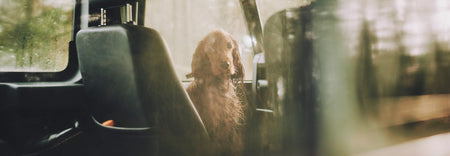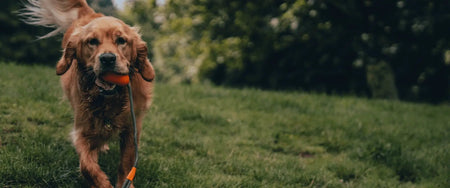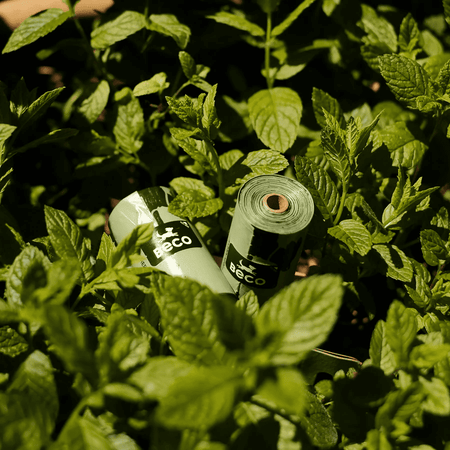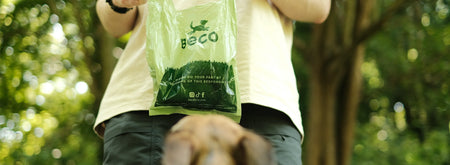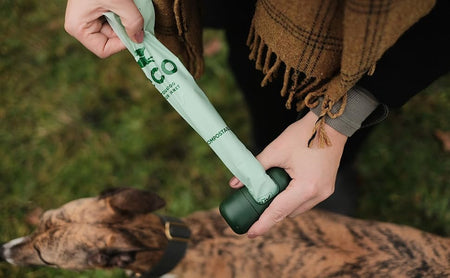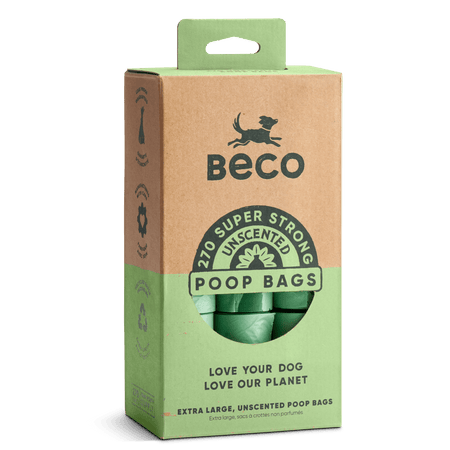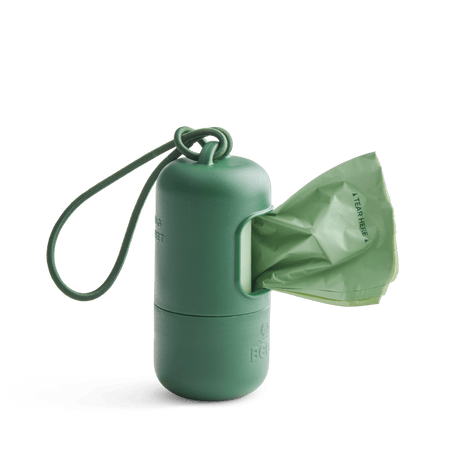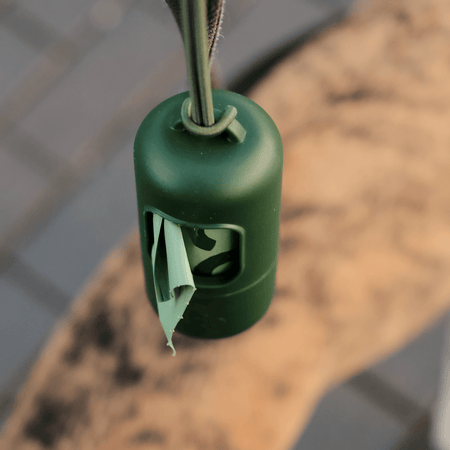Bathing your dog every time they get a bit messy isn’t always practical –or necessary.
Whether you’ve got a bath-shy pup or just need a quick freshen-up between washes, knowing how to clean a dog without a bath can save time and stress.
We’ll walk through when to skip the bath, what tools to use, and how to keep your dog clean and comfortable with simple, no-rinse routines.
- Over-bathing strips natural oils; most dogs need full baths only every 4-6 weeks.
- Essential tools include dog wipes, waterless shampoo, paw cleaners, and soft brushes.
- Target cleaning by body area: paws after walks, face for eye gunk, ears with cotton pads.
- Different coat types need tailored approaches: daily brushing for double-coats, wipes for short-coats.
Why You Might Need to Skip the Bath
Baths are great when they’re needed. But there are plenty of situations where a full soak isn't ideal.
-
Over-bathing can harm skin health: Too many baths can strip the skin of natural oils, leading to dryness, itchiness, and even infections. Most dogs do best with a full bath every 4 to 6 weeks, depending on their coat type and lifestyle.
-
Young puppies aren't ready for water: Until they’re about eight weeks old, puppies can't regulate their body temperature well. A full bath could do more harm than good.
-
Health or mobility concerns: Senior dogs, post-surgery pups, or those with mobility issues might find baths painful or stressful.
-
You’re on the go: Sometimes you just don’t have access to a tub or hose (like during travel or camping).
-
Bath anxiety is real: For dogs that dread the tub, waterless grooming offers a gentler alternative.
Tools & Supplies You’ll Want to Have Handy
Build yourself a quick-clean kit with these essentials:
-
Dog grooming wipes (gentle, pH-balanced)
-
Waterless shampoo (spray, foam, or powder format)
-
Soft towels or microfibre cloths
-
Dog brush suited to your pet’s coat type
-
Paw cleaner (like a “mudbuster”)
-
Cotton pads or gauze for delicate areas
-
Baking soda or cornstarch (for DIY deodorising)
-
Dog-safe deodorising spray for light odours
Quick-Clean Methods by Body Area
Some messes don’t require a full scrub – just a bit of spot cleaning.
Paws
-
Use a damp towel or paw cleaning cup to remove mud or road grime after walks.
-
Don’t forget between the toes, where debris can hide.
Face
-
For crusty eye gunk or food residue, try a warm, damp cotton pad or vet-approved eye wipe.
-
Always wipe away from the eyes and avoid scented products near the face.
Ears
-
Use a cotton ball with a vet-recommended ear cleaner.
-
Wipe only what you can see; never insert anything into the ear canal.
Rear End
-
Use unscented baby wipes or dog-specific wipes to clean up after toileting.
-
For long-haired breeds, trimming the area can help prevent future mess.
General No-Bath Cleaning Techniques
Waterless Shampoo
Apply foam, spray, or powder to your dog’s coat, avoiding eyes and mouth. Let it sit as directed, then brush out thoroughly.
Look for formulas designed for sensitive skin.
Grooming Wipes
Great for muddy paws, messy faces, and in-between cleans. Choose options free from alcohol or harsh fragrances.
Dry Shampoo Alternatives
Mix equal parts baking soda and cornstarch, sprinkle over your dog, massage it in, wait a few minutes, and brush it out. Effective at deodorising and oil absorption.
Brushing
Beyond removing dirt and loose fur, brushing distributes natural oils and keeps skin healthy. Tailor your brushing schedule to your dog’s coat type.
Deodorising Sprays
Quick refresh for smelly coats. Use only dog-safe options, and avoid synthetic fragrances that may irritate.
Breed- and Coat-Specific Considerations
Different dogs need different routines:
-
Double-coated dogs (like Huskies or Goldens): Prone to dirt and shedding. Daily brushing and dry shampoo between baths works well.
-
Short-coated breeds (like Boxers): Wipes and occasional waterless sprays usually suffice.
-
Sensitive or oily coats (like Bulldogs): Benefit from minimal product use; gentle wipes are your best friend.
-
Toy breeds: Spot-cleaning faces and paws is often enough.
-
Older dogs or puppies: Always opt for gentle, no-rinse options and keep sessions short.
When Your Dog Gets Into Something Messy
For smelly, sticky, or downright gross situations:
-
Remove debris immediately with a cloth or towel.
-
Use oil (like olive or coconut) to loosen sticky substances like sap.
-
Neutralise odour with baking soda or a diluted vinegar wipe-down (never use near eyes or broken skin).
-
Spot-clean with dog wipes or a damp cloth.
-
Brush dried mud rather than washing it.
-
Inspect carefully for any remaining muck.
If they’ve rolled in something particularly vile, you’ll likely still need a proper bath, but these steps will tide you over.
No-Bath Cleaning for Skin Conditions
Dogs with skin issues need a cautious approach:
-
Allergies: Use hypoallergenic wipes to remove allergens.
-
Hot spots: Keep the area dry and clean using vet-approved sprays.
-
Infections: Antiseptic or antifungal wipes may be needed between medicated baths.
-
Eczema/Seborrhoea: Gentle wiping to reduce flakiness. Vet advice is essential here.
-
Parasites: Spot-cleaning may help remove debris, but vet-prescribed treatments are key.
Always check with your vet before trying any new cleaning method on a dog with a skin condition.
Desensitising Dogs Who Hate Being Cleaned
Not every dog loves a grooming session. That’s OK – you can work on it.
-
Start with letting them sniff the tools.
-
Use treats and praise during each step.
-
Begin with areas they tolerate, like their back, and gradually move to sensitive spots.
-
Keep sessions short and consistent.
-
Avoid forcing it. Stress makes future sessions harder.
In time, most dogs learn that cleaning = snacks, not stress.
Final Tips for Stress-Free Grooming
-
Use calm, consistent routines.
-
Reward generously.
-
Try different formats (some dogs hate sprays but tolerate foam).
-
Keep sessions short and sweet.
-
End on a high note with play or affection.
Frequently Asked Questions
Can I use baby wipes to clean my dog?
Only if they’re fragrance-free, alcohol-free, and labelled as safe for sensitive skin but dog-specific wipes are always the better choice, as they’re pH-balanced for canine skin.
How often can I use waterless shampoo on my dog?
Most waterless shampoos can be used a few times a week, but it depends on the formula and your dog’s skin. Always check the label and watch for any signs of irritation.
Is dry shampoo safe for dogs with allergies?
Some dogs with allergies tolerate dry shampoos well, especially hypoallergenic or oatmeal-based options, but it’s best to consult your vet before use if your dog has known sensitivities.
Can I use a blow dryer after spot cleaning my dog?
Yes, on a cool or low-heat setting, and only if your dog is comfortable with it. This can help dry damp areas quickly, especially in long-haired or double-coated breeds.
Conclusion
Keeping your dog clean doesn’t always mean hauling them into the tub.
Whether it’s muddy paws after a rainy walk, a bit of gunk near their eyes, or just general in-between-bath freshness, knowing how to clean a dog without a bath can make everyday care much simpler.
The key is using gentle, dog-safe tools – like wipes, waterless shampoos, brushes, and soft towels – to keep messes manageable without overdoing it.
Spot-cleaning sensitive areas, brushing regularly, and paying attention to your dog’s coat type all play a part in keeping them comfortable and healthy.
For messes big or small, our doggy wipes are made for daily use – safe for sensitive skin, easy to pack on the go, and perfect for paws, rears, or quick freshen-ups between baths. Shop now!





